Express Concert: Baroque Marvels with Julia Bogorad-Kogan
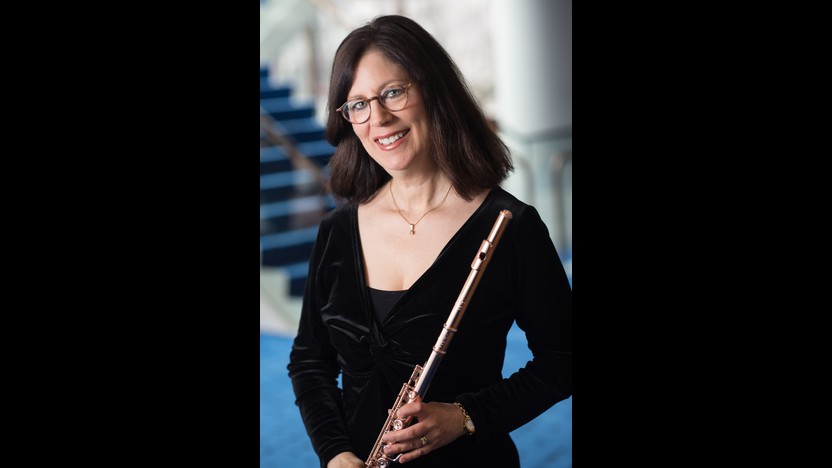

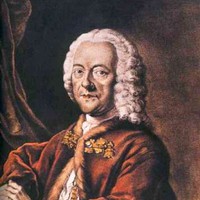
It was not unusual for eighteenth-century musicians to hold a variety of professional appointments. Georg Philipp Telemann, however, had an even more multi-faceted career than most of his contemporaries. In addition to composing an astonishing 3000 pieces, Telemann also worked as a church music director, opera director, orchestra concertmaster, court music director, and university ensemble director. In fact, Telemann was so famous that he was the Leipzig authorities’ first choice for the coveted position of music director for the Thomaskirche in 1723. Only when Telemann, and subsequently Johann Christoph Graupner, turned down the job did the search committee hire their third choice — Johann Sebastian Bach.
Unlike many other eighteenth-century composers, Telemann was not born into a musical family, and he had little musical training before high school. When he began composing, his mother was concerned that music would be an unsuitable professional path, and she forbid him from playing or writing music. Telemann disobeyed her wishes, and his mother sent him to boarding school as a punishment. Being away from home gave Telemann ample opportunities to continue his musical education, and he learned to play the violin, organ, harpsichord, chalumeau, viola da gamba and bass trombone.
As a twenty-year-old student, Telemann vowed to give up music and study law at the University of Leipzig. His university roommate, however, discovered the score to one of Telemann’s settings of Psalm 6 in a suitcase and arranged to have the piece performed in Leipzig’s Thomaskirche and Nikolaikirche. The city mayor was so impressed with the piece that he commissioned Telemann to compose music every other week for the churches, even though the city already had a music director. Telemann subsequently withdrew from law school and launched his extraordinary career as a professional musician.
Telemann’s Quartet in A Minor likely dates to the 1720s and is considered to be one of his finest quartets. The piece opens with a poignant movement full of unrelenting sighing figures over a heart-beat-like pulsing bass line. Small melodic motives are passed seamlessly between the upper three instruments. This is followed by an impressive intellectual contrapuntal feat — a movement that is structured as a triple fugue. Nowhere else in his quartets does Telemann write a movement with counterpoint that is this complex. A fugue typically has a single musical subject (motive) that is then sounded in imitation between the parts. In this movement, there are three individual musical subjects, which eventually sound simultaneously without breaking any of the strict rules of eighteenth-century counterpoint.
In the mellow third movement, a single melodic motive is stated in close imitation between the three upper voices. This is followed by a fourth movement written in the Sonate auf Concertenart genre that Telemann is credited with codifying. In this genre, elements of the sonata and concerto are blended, and whether an instrument is functioning as a soloist or accompanist is often intentionally unclear. The solo passages are particularly virtuosic in this final triumphant movement.
Paula Maust ©2022
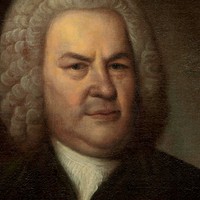
In 1723, Johann Sebastian Bach accepted a new position as Leipzig’s Thomaskantor, where he was responsible for coordinating the music for the city’s churches, teaching, and composing a weekly cantata. Six years later, he also assumed leadership of the Leipzig Collegium Musicum. This ensemble of students from the University of Leipzig performed regularly in Gottfried Zimmermann’s coffee house, often playing new works by Bach. One such work was a sonata in G major for viola da gamba and obligato harpsichord, which Bach then arranged as a trio sonata for two flutes and continuo.
Although it is uncertain who Bach had in mind when he arranged his gamba sonata for two flutes and continuo, it is possible he intended it to be performed by his third son, Johann Gottfried Bernhard. Bach’s children frequently played in the Collegium’s concerts, so it is possible that Johann Gottfried Bernhard and another Leipzig flutist would have performed this trio sonata in Zimmermann’s coffee house. Aside from his musical abilities as a flutist and organist, we know little about Johann Gottfried Bernhard. He seems to have been a somewhat rebellious libertine, abruptly quitting both his organist positions and leaving a slew of debts. Shortly after enrolling in law school, he died at age twenty-one, leaving no known compositions.
Today, the Trio Sonata in G is performed with various combinations of instruments, including flutes, violins, and violas da gamba. The piece opens with a soaring, lyrical melody that is alternated between the two upper instruments and accompanied by a gentle walking bass line. This is followed by a cheerful movement characterized by a melodic motive that is always reaching upwards. A pulsing bass line reminiscent of a heartbeat accompanies the haunting melodies in the third movement. The fourth movement is virtuosic, exuberant and contains a complex imitative dialogue between all three instrumental lines.
Paula Maust ©2022
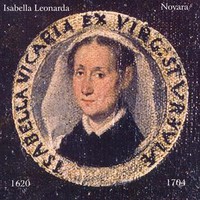
When she was sixteen years old, Isabella Leonarda entered the Ursuline convent Collegio di S Orsola in Novara. She remained there until her death, holding numerous positions including music instructor, mother and clerk, mother superior, madre vicaria and counsellor. Leonarda’s nearly 200 surviving musical works span nearly every sacred genre of the time and range from small instrumental sonatas to large concerted masses.
Although we know little about Leonarda’s personal life or the reach of her music beyond Novara, she was highly regarded in her hometown. A 1700 book celebrating Novara’s most famous citizens included the following about her: “because of the singular esteem in which she is held in the art of music, Leonarda could rightly call herself the Novarese Muse par excellence. For in her are combined rare invention, universal genius, felicity in the expression of the affections, fecundity of ideas, adornment of fundamental theories, and finally all that which one desires in the perfection of this art.”
Leonarda’s violin sonata was published in 1693 along with eleven other trio sonatas in a volume dedicated to Emperor Leopold I. This collection, her twelfth opus, is the first known published book of instrumental sonatas by a woman in Western music history. A Novarese poet wrote a sonnet comparing Leonarda’s compositional abilities to Emperor Leopold I’s military prowess. This sonnet was presented to the Emperor along with the collection of sonatas. The violin sonata is composed of many brief sections, each with its own unique character. Expressive adagio moments seamlessly flow into lively dance-like sections, and there is often an intricate interplay between the violin and bass line.
Paula Maust ©2022
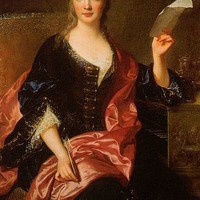
When she was a young girl, Élisabeth-Claude Jacquet de La Guerre’s father presented her at the court of King Louis XIV, where she played the harpsichord and sang. The King was reportedly so captivated by her abilities that he arranged for her continued musical education in Versailles. Newspapers of the day regularly revered Jacquet de La Guerre as a virtuosic performer. A 1677 account in the Mercure galant, for example, reported that “she sings at sight the most difficult music. She accompanies herself, and accompanies others who wish to sing, at the harpsichord, which she plays in a manner that cannot be imitated.”
Louis XIV also supported Jacquet de La Guerre’s composition career for the rest of his life, even after she left the court to marry. In addition to writing two books of harpsichord music, instrumental sonatas, and a ballet, Jacquet de La Guerre also wrote an opera. This monumental work, Cephale et Procris, was the first opera by a woman to be staged at the Paris Opera. Jacquet de La Guerre also hosted a famous salon in her Parisian home, where her works and new pieces by France’s most respected composers were premiered.
Most of Jacquet de La Guerre’s works were published during her lifetime, although her trio sonatas for two violins and continuo were not. These works survive in a manuscript that dates to approximately the mid 1690s. Italian composers were writing instrumental pieces called sonatas across much of the seventeenth century, but the term was relatively new to French musical compositions. The composer and musicologist Sébastien de Brossard defined the French sonata in 1695 as an instrumental composition that was “varied with all sorts of tempos and expressions, purely according to the fantasy of the composer.” Jacquet de La Guerre’s Trio Sonata in D Major is composed of multiple sections that seamlessly flow into one another. Each section has a different character, tempo, and meter, which creates a sense of improvisatory excitement.
Paula Maust ©2022

It was not unusual for eighteenth-century musicians to hold a variety of professional appointments. Georg Philipp Telemann, however, had an even more multi-faceted career than many of his contemporaries. In addition to composing an astonishing 3000 pieces, Telemann also worked as an orchestra concert master and as music director for churches, the opera, and university ensembles. In fact, he was so famous that he was the Leipzig authorities’ first choice for the coveted position of music director for the Thomaskirche in 1723. Only after Telemann and Johann Christoph Graupner turned down the job did they hire their third choice — Johann Sebastian Bach.
Unlike many other eighteenth-century composers, Telemann was not born into a musical family, and he had little musical training before high school. When he began composing, his mother was concerned that music would be an unsuitable professional path, and she forbid him from playing or writing music. Telemann disobeyed her wishes, and his mother sent him to boarding school as a punishment. Being away from home gave Telemann ample opportunities to continue his musical education, and he learned to play the violin, organ, harpsichord, chalumeau, viola da gamba, and bass trombone.
As a twenty-year-old student, Telemann vowed to give up music and study law at the University of Leipzig. His university roommate, however, discovered the score to one of Telemann’s settings of Psalm 6 in a suitcase and arranged to have the piece performed in Leipzig’s Thomaskirche and Nikolaikirche. The city mayor was so impressed with the piece that he commissioned Telemann to compose music every other week for the churches, even though the city already had a music director. Telemann subsequently withdrew from law school and launched his extraordinary career as a professional musician.
The Concerto for Two Oboes and Trumpet is a Sonate auf Concertenart, a genre that blends elements of the sonata and concerto. The small size of the ensemble, a fairly equal distribution of solo passages for each player, and a four-movement structure are drawn from the sonata tradition. In this piece, the writing is so nuanced that the listener may not always be entirely certain who is the soloist and who is the accompanist at any given moment. Telemann uses ritornello form in these pieces, which comes from the concerto tradition. In ritornello form, an opening musical passage played by the accompanying orchestra is alternated with individual solo passages. Since there are only four performers in this piece, however, the solo and accompanying parts are played by the same people.
The Concerto for Two Oboes and Trumpet opens with a broad movement featuring a walking bass line in the continuo section. The oboes and continuo function as the orchestral tutti throughout the movement, playing the ritornello and accompanying lines, and the trumpet has most of the solos. In the brilliant second movement, the solo lines are seamlessly passed back and forth between the trumpet and the two oboes. The third movement is a gentle, rocking siciliano featuring exquisite solo passages in the first oboe. In the cheerful fourth movement, different combinations of the upper instruments combine to form the solo and accompanying lines, alternating in playful imitation.
Paula Maust ©2022
Get driving directions and find nearby parking.
Find dining options close to the venue.
View seating charts to find out where you'll be seating.
Get driving directions and find nearby parking.
Find dining options close to the venue.
View seating charts to find out where you'll be seating.
